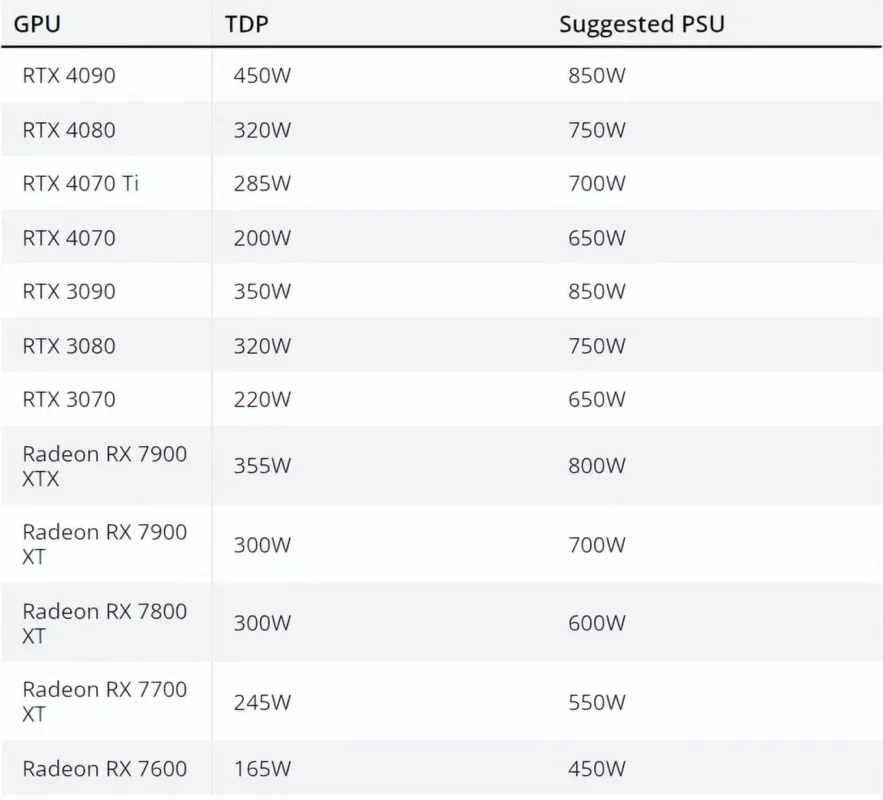1. Demystifying TDP: What Does It Stand For?
When delving into the world of DIY computer assembly, enthusiasts often encounter the term TDP (Thermal Design Power) when evaluating different brands or models of computer components. But what exactly is TDP, and why does it hold such significance in the realm of computer hardware?
2. Unraveling TDP: The Essence of Thermal Design Power
TDP, an acronym for Thermal Design Power, serves as an indicator of the anticipated heat output of hardware during its operation. To simplify, consider a CPU’s TDP of 90W; this denotes an expected heat output of 90W when the CPU is in use. Manufacturers leverage TDP as a benchmark for designing appropriate cooling systems. Whether it’s a passive cooling system, fan-based mechanism, or liquid cooling setup, higher TDP values necessitate more robust cooling solutions. For instance, attempting to use a laptop CPU cooler to manage the heat generated by a 220W AMD FX-9590 would be futile.
3. The Reality Check: TDP in Practical Scenarios
Despite the stated TDP, hardware components seldom reach their designated thermal thresholds during regular usage, except when numerous applications and processes run concurrently.
4. Deciphering TDP vs. Power Consumption
It’s easy to confuse TDP with power consumption due to both metrics being measured in watts. However, the TDP of a CPU doesn’t indicate that the processor requires a 90W power supply. Is TDP synonymous with power consumption, then?
5. The Distinction: TDP vs. Power Consumption
While TDP doesn’t directly equate to the actual power consumption of hardware, it does offer an approximate estimation. Components with lower TDP usually demand less power, although real-world readings may vary from the manufacturer’s stated values. Despite this discrepancy, TDP serves as a reliable reference for designing cooling systems and approximating the required power supply unit (PSU). For a single GPU PC, a secure recommendation usually revolves around a 500W high-quality power supply.

6. The Significance of TDP in Hardware Selection
Why does TDP play a pivotal role in selecting PC hardware?
Primarily, TDP aids in assessing hardware power efficiency and performance. In the case of CPUs, those boasting higher TDP measurements typically deliver superior performance but also consume more power. While TDP doesn’t offer an exact measurement of power consumption, it serves as a valuable benchmark.
7. The Relationship Between Power and Performance
Upon analyzing CPU or display review data, it becomes evident that more powerful devices tend to generate substantial heat.
8. Conclusion: Harnessing TDP for Informed Hardware Choices
In conclusion, comprehending TDP proves indispensable when navigating the intricate landscape of computer hardware. It acts as a guiding beacon, shedding light on power efficiency, performance expectations, and requisite cooling solutions. So, the next time you’re scouting for computer components, consider TDP as a vital factor for making informed decisions.
Remember, TDP isn’t just an acronym; it’s a pivotal element defining your computer’s prowess.
9. Frequently Asked Questions (FAQs)
-
Is TDP the same as power consumption?
No, Thermal Design Power (TDP) is not synonymous with power consumption. TDP represents the maximum amount of heat generated by a hardware component during operation, measured in watts. While higher TDP often correlates with higher power consumption, it doesn’t directly equate to the actual power used by the component. Power consumption involves the actual electrical power drawn by the hardware, which might differ from the TDP rating under varying workload conditions.
-
How does TDP affect hardware performance?
TDP serves as an indicator of a component’s heat output rather than its direct impact on performance. However, components with higher TDP values tend to generate more heat when operating at maximum capacity. Manufacturers design cooling systems and power delivery solutions based on TDP to ensure stable performance without overheating. While higher TDP often accompanies better performance capabilities, it doesn’t solely dictate a component’s performance level.
-
Can a lower TDP imply better power efficiency?
Yes, generally, a lower TDP suggests better power efficiency for hardware components. Lower TDP values indicate that the component generates less heat during operation, often resulting in lower power consumption under normal usage conditions. However, power efficiency isn’t solely determined by TDP; other factors like architecture, workload optimization, and manufacturing process also contribute to overall efficiency.
-
Should I always match the PSU wattage to the TDP?
It’s advisable to choose a power supply unit (PSU) with a wattage slightly higher than the total TDP of all components in your system. This ensures sufficient power delivery and allows for headroom, especially when considering additional hardware upgrades or maximizing system performance. However, directly matching the PSU wattage to TDP is not mandatory, as factors like efficiency ratings, future upgrades, and system stability should also be considered.
-
Why do some components exceed their stated TDP under heavy usage?
Under heavy workloads or during intensive tasks, hardware components may surpass their stated TDP due to factors like overclocking, inefficient cooling, or sustained maximum usage for prolonged periods. Additionally, variations in ambient temperature or software optimizations can contribute to increased power draw, leading to components exceeding their expected TDP. It’s essential to ensure adequate cooling and proper system configurations to manage such scenarios effectively.




